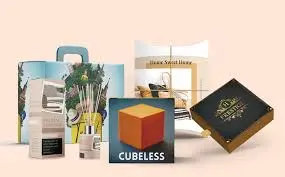In today’s eco-conscious world, more brands are turning to organic products—and with them comes the need for equally responsible packaging. Kraft packaging for organic products offers the perfect blend of sustainability, simplicity, and style. It not only preserves the integrity of natural goods but also aligns with the values of eco-aware consumers.
This article explores why Kraft packaging boxes is ideal for organic products, its benefits, types, and how it supports sustainable brand identity in a competitive marketplace.
What is Kraft Packaging?
Kraft packaging is made from unbleached pulp produced through the Kraft process. It results in strong, coarse, brown paper that is recyclable, biodegradable, and compostable. Unlike bleached or chemically treated papers, Kraft paper has minimal environmental impact, making it the preferred material for sustainable brands.
Kraft packaging is widely used in:
- Food and beverage containers
- Skincare and cosmetics boxes
- Apparel wrapping
- Eco-friendly mailing and shipping boxes
Its raw, earthy texture and strength make it ideal for packaging that reflects purity and simplicity.
Why Kraft Packaging is Perfect for Organic Products
When consumers choose organic, they expect the entire product experience to reflect that choice—including the packaging. Kraft packaging communicates transparency, sustainability, and authenticity, which are essential values for organic shoppers.
1. Eco-Friendly and Biodegradable
Kraft packaging is made from natural wood pulp and is easily recyclable or compostable. This reduces the carbon footprint associated with packaging waste and helps brands meet environmental regulations and consumer expectations.
2. Natural Look and Feel
The rustic, brown appearance of Kraft paper pairs perfectly with the aesthetics of organic products. It gives off a handmade, earthy vibe that instantly tells customers: “This product is clean, pure, and environmentally friendly.”
3. Non-Toxic and Food Safe
Unbleached Kraft paper is free from harsh chemicals, making it safe for packaging food, teas, supplements, or skincare. It’s a popular choice for companies that want packaging as clean as their ingredients.
4. Supports Minimalist Branding
Less is more in the organic world. Kraft paper allows brands to embrace minimalism—using simple logos, earth-toned inks, or stamps—without sacrificing style. This not only reduces costs but also appeals to consumers tired of flashy, wasteful packaging.
5. Customizable and Versatile
Despite its simplicity, Kraft packaging is highly customizable. Brands can print directly on it, add custom cutouts, embossing, or pair it with twine, recycled stickers, or plant-based inks to elevate their packaging game.
Common Uses of Kraft Packaging in Organic Markets
Let’s look at how different industries are using Kraft packaging to enhance their brand and support sustainable practices:
- Organic Food: Boxes and pouches for grains, snacks, teas, and spices.
- Organic Skincare: Tubes, jars, and boxes for creams, soaps, and oils.
- Eco-Friendly Apparel: Shirt wraps, tags, and shipping envelopes.
- Handmade Soaps and Candles: Window boxes and sleeves for artisanal products.
- Health Supplements: Kraft cartons and inserts for capsules and powders.
All of these benefit from Kraft’s protective qualities and visual synergy with the natural product category.
Kraft Packaging and Your Brand’s EEAT Value
Google’s EEAT standards (Experience, Expertise, Authoritativeness, and Trustworthiness) apply not just to your content but to your overall brand identity. Packaging plays a supporting role in reinforcing these qualities:
- Experience: Quality Kraft packaging enhances customer satisfaction and reflects attention to detail.
- Expertise: Using food-safe, sustainable packaging shows industry knowledge and care.
- Authoritativeness: Sustainable choices support certifications like USDA Organic, EcoCert, etc.
- Trustworthiness: Transparent packaging reflects brand integrity and builds long-term customer trust.
Aligning your packaging with EEAT values helps build online credibility and real-world loyalty.
Tips for Designing Effective Kraft Packaging
- Use Eco-Friendly Inks: Soy-based or water-based inks preserve recyclability.
- Add Reuse Instructions: Encourage customers to reuse or compost your packaging.
- Include Certifications or Badges: Highlight sustainability or organic certifications on your box.
- Keep It Minimalist: Let the Kraft texture speak for itself—clean designs resonate more.
- Tell Your Story: Use a side panel or insert to share your eco journey or sourcing story.
Final Thoughts
Kraft packaging is more than a trend—it’s a commitment to a better planet. For brands selling organic products, it’s the perfect companion that communicates values, enhances shelf appeal, and delivers functionality. Whether you’re a small business or a growing eco-brand, Kraft packaging helps bridge the gap between sustainable practices and smart marketing.
By adopting Kraft packaging, you’re not just wrapping your product—you’re wrapping your values, your mission, and your promise to the earth and your customers. Make the shift today and build a greener, stronger brand for tomorrow.







